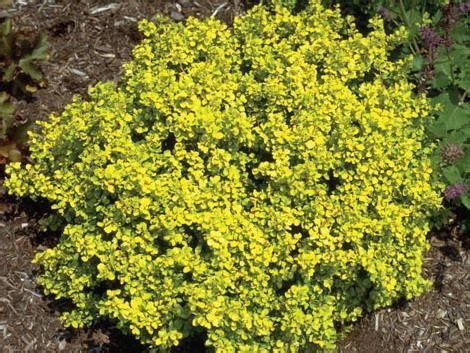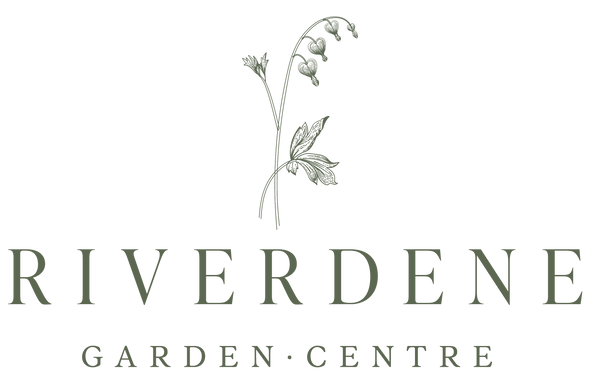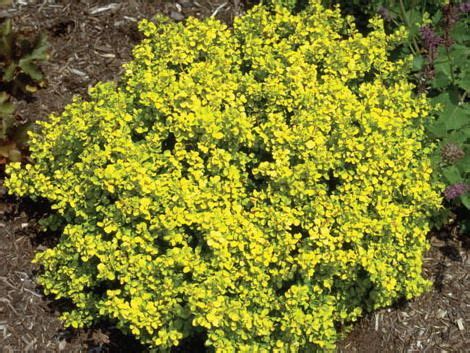Riverdene Garden Center
Sunsation Barberry
Sunsation Barberry
Couldn't load pickup availability
Berberis thunbergii 'Sunsation'
Sunsation® Barberry is a compact, deciduous shrub prized for its brilliant golden-yellow foliage and easy-care nature. This low-maintenance, drought-tolerant plant is perfect for borders, hedges, foundation plantings, and accent gardens. It adds vibrant color throughout the growing season, with foliage that may take on orange and red hues in the fall. Small yellow flowers appear in spring, followed by bright red berries in autumn, which provide seasonal interest and attract birds.
Planting & Growing Conditions
- Hardiness Zone: 4-8 (very winter-hardy, suitable for prairie climates)
- Mature Size: 2-3 feet tall and wide
- Growth Rate: Moderate
-
Sunlight Needs:
- Prefers full sun to partial shade (best leaf color in full sun)
- Tolerates some shade but may not be as vibrant
-
Soil Requirements:
- Prefers well-drained, fertile soil
- Adaptable to clay, sandy, and loamy soils
- Avoid overly wet or poorly drained conditions
- Spacing: 2-3 feet apart for optimal growth and air circulation
Watering & Maintenance
-
Young Plants (First Year):
- Water deeply 1-2 times per week to establish roots
-
Established Plants:
- Drought-tolerant but benefits from occasional deep watering during dry periods
-
Mulching:
- Apply a 2-3 inch layer of mulch to retain moisture and suppress weeds
Fertilizing
- First Year: No fertilizer needed—focus on root establishment
-
Mature Shrubs:
- Apply a balanced fertilizer (e.g., 10-10-10) in early spring to support healthy growth
- Organic options include compost or well-rotted manure
- Avoid excessive nitrogen, which encourages weak, leggy growth
Pruning & Maintenance
- Best Time to Prune: Late winter to early spring, before new growth starts
-
How to Prune:
- Remove dead or damaged branches to maintain plant health
- Trim lightly to shape the plant and control size
- For hedges or borders, prune more frequently to maintain a tidy form
Flowers, Foliage & Seasonal Interest
- Bloom Time: Spring (April-May)
- Flower Color: Small, pale yellow flowers
-
Foliage:
- Spring & Summer: Bright golden-yellow leaves
- Fall: Leaves develop red and orange tones before dropping
-
Berries:
- Small, bright red berries in autumn, which can persist into winter
- Attracts birds and provides winter interest
Pest & Disease Management
- Resistant to: Deer, drought, and most pests
-
Common Pests:
- Occasionally affected by aphids or scale insects
- Solution: Use insecticidal soap or prune infested branches
-
Common Diseases:
- Generally disease-resistant, but can develop leaf spot or powdery mildew in humid conditions
- Solution: Ensure good air circulation and avoid overhead watering
Winter Protection
- Extremely winter-hardy—no special protection needed in Zone 4+
-
Mulching:
- Apply a layer of mulch in late fall to protect roots from extreme temperature fluctuations
Landscape Uses
Great for colorful low hedges and borders
Excellent as a specimen plant or mass planting
Drought-tolerant and easy to maintain
Bright red berries attract birds in winter
Works well in urban and commercial landscapes
Additional Notes:
- Thorns: Has sharp, thorny branches, making it ideal for barriers or defensive hedges
- Wildlife-Friendly: Birds enjoy the berries, but they are not edible for humans
- Lifespan: 20+ years with proper care
Photo courtesy of Bluegrass Nursery
Share


